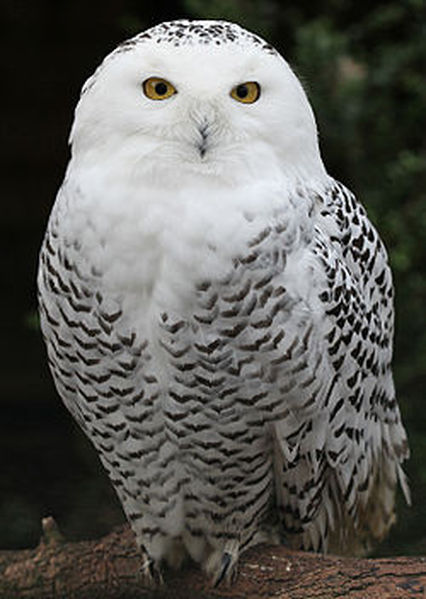The snowy owl, a creature of ethereal beauty, evokes a sense of wonder. Its stark white plumage, punctuated by piercing yellow eyes, allows it to become a phantom against the Arctic expanse. Encountering one is often considered a stroke of immense luck. But is this perception truly accurate? How rare is it actually to witness *Bubo scandiacus*, the snowy owl, beyond its frigid, northern domain? The answer, like the owl itself, is complex and multifaceted. Prepare for your preconceived notions to be challenged. Let’s delve into the truth about these magnificent birds and their sporadic appearances in more temperate climes.
I. The Illusion of Rarity: Population Dynamics in the Arctic
The apparent scarcity of snowy owls stems, in part, from their remote habitat. Nesting primarily above the Arctic Circle, they inhabit regions largely inaccessible to humans. This geographical isolation skews our perception of their overall population. Snowy owl numbers are intrinsically linked to the cyclical abundance of their primary prey: the lemming. Lemming populations experience dramatic boom-and-bust cycles. During years of lemming profusion, snowy owl pairs exhibit remarkable fecundity, producing large clutches of owlets. Conversely, during lemming scarcity, breeding success plummets, and many adults may forgo breeding altogether. Thus, snowy owl populations fluctuate wildly, influenced by the capricious nature of their food supply.
II. Irruptions: When the Arctic Migrates South
The key to understanding snowy owl “rarity” lies in understanding irruptions. An irruption is a sudden, often dramatic, southward movement of a species beyond its typical range. Snowy owl irruptions are triggered by those aforementioned lemming population crashes in the Arctic. When food becomes scarce, young owls, particularly those born in a year of high productivity, are forced to disperse in search of sustenance. These inexperienced hunters often venture southward, sometimes reaching as far as the southern United States and even Bermuda. Irruption years create a paradox. Suddenly, these birds, normally confined to the Arctic, become relatively “common” in areas where they are typically absent. The years between irruptions, however, reinforce the perception of rarity.
III. Mapping the Migratory Mosaic: Tracking Snowy Owl Movements
Modern technology provides invaluable insights into snowy owl movements. Researchers employ satellite telemetry to track individual owls, revealing their migratory pathways and wintering grounds. This data challenges previous assumptions about their behavior. Some owls exhibit remarkable fidelity to specific wintering locations, returning year after year. Others undertake long-distance dispersals, crisscrossing vast swathes of North America and Eurasia. The data indicates that some populations are more prone to irruption than others, a finding that suggests regional variations in prey availability and habitat quality within the Arctic. These insights are not only important for understanding the species, but also for developing effective conservation strategies.
IV. Habitat Preferences Beyond the Tundra: Finding Snowy Owls in Unexpected Places
During irruption years, snowy owls demonstrate a surprising adaptability to novel environments. They are not strictly creatures of the open tundra. They seek out habitats that mimic the open terrain of their Arctic homeland. Airports, agricultural fields, coastal dunes, and even industrial areas can provide suitable hunting grounds. Look for them perched on elevated structures: light poles, fence posts, or hay bales. These vantage points allow them to scan for prey, which during irruptions, often consists of rodents, waterfowl, and other birds. Their presence in these seemingly incongruous locations underscores their resilience and opportunistic nature.
V. Threats to Snowy Owls: Conservation Concerns
Despite their adaptability, snowy owls face a number of threats, both in their Arctic breeding grounds and during their southward forays. Climate change poses a significant challenge. Warming temperatures can disrupt lemming populations, alter snow cover, and degrade nesting habitat. Collisions with vehicles and aircraft are a major cause of mortality, particularly during irruption years when owls are unfamiliar with human landscapes. Electrocution from power lines also poses a risk. Furthermore, persecution, though less common than in the past, remains a concern in some areas. Conservation efforts focus on mitigating these threats through habitat protection, public awareness campaigns, and responsible land management practices.
VI. Ethical Considerations: Observing Snowy Owls Responsibly
The allure of seeing a snowy owl can lead to unintentional harm. Birders and photographers must adhere to ethical guidelines to minimize disturbance. Maintain a respectful distance and avoid approaching owls too closely. Do not flush them from their perches or interfere with their hunting behavior. Refrain from using flash photography, as it can disorient them. Report any signs of injury or distress to local wildlife authorities. Responsible observation ensures that these magnificent birds can thrive, both during their periodic visits to our landscapes and within their remote Arctic strongholds.
VII. Beyond Rarity: Appreciating the Snowy Owl’s Enduring Appeal
Ultimately, the question of how rare a snowy owl is transcends mere statistical frequency. It speaks to the bird’s inherent mystique. Snowy owls symbolize the wildness of the Arctic, a realm of extreme beauty and profound ecological significance. Each sighting, whether during an irruption or a chance encounter in their northern range, offers a fleeting glimpse into a world that is both fragile and resilient. So, the next time you hear whispers of a snowy owl gracing your local landscape, remember that it is more than just a rare bird. It is a messenger from the North, a reminder of the interconnectedness of ecosystems, and an invitation to appreciate the wonders of the natural world. The experience is less about ticking off a rare sighting, and more about appreciating the bird’s existence and its role in the complex tapestry of life.
